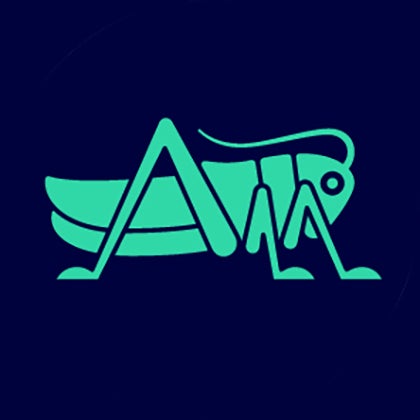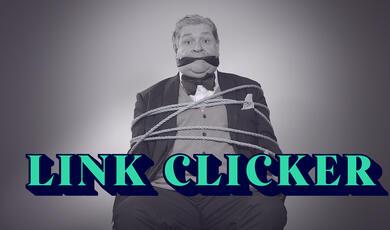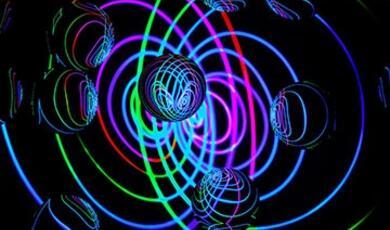Nanotechnology - Are the promises of it being the next industrial revolution being realised?
Share
- Details
- Text
- Audio
- Downloads
- Extra Reading
Dr Alan Smith, Associate Director of the UK Government's Micro Nanotechnology Network
After the initial hype, which heralded the prospects for nanotechnology, the excitement continues. The expenditure of many governments is at an unprecedented level in the race for new markets that are likely to be in excess of $1 trillion in ten years' time.
Download Text
NANOTECHNOLOGY – THE NEXT INDUSTRIAL REVOLUTION?
Dr Alan Smith
What is nanotechnology?
Nanotechnology has been heralded as the next industrial revolution. Richard Feynman has been credited with being the ‘father’ of nanotechnology. He was a genius who received the Nobel Prize for physics in 1965, but his private life left a lot to be desired. Although he was unable to actually see atoms or molecules at that time, he predicted that working down at that scale would provide new properties. It was not until two other Nobel Prize winners for physics (1986), Heinrich Rohrer and Gerd Binnig, came up with scanning tunnelling microscopy, were we able to see down at such small scales. After that nanotechnology seemed to be born, and more recently there has been massive development in this emerging field.
In Greek, nano means dwarf, and a nanometre is one billionth of a metre, or a millionth of a metre. Few of us can think in that many noughts, so there are a number of analogies that help one to understand the nano-scale. If you had 80,000 nano-sized particles in a row, they would still only be the diameter of a human hair. Geckos hang upside down on the ceiling by nanotechnology; on each toe they have millions of tiny hairs, and each hair has a minute force which holds on to the ceiling. When there are millions of these hairs the creature can in fact support 200 times its own weight hanging from the ceiling. When a gull lands on the deck of an aircraft carrier, the vessel sinks by one nanometre!
Things change at the nano-scale
Down at the nano-scale, properties change. This is easy to envisage since in a cubic centimetre of material one in 10 million atoms are on the surface but for a cubic nanometre, 80% of the atoms are on the surface. If you take a grain of salt and grind it down into nanoparticles the surface area increases by 100,000 times. Your car catalysts are making use of such large increases in surface area. A grain of sand on the beach would take 34 million years to dissolve if it was placed in a glass of water. If it was a nanoparticle of sand, it would take just over a second to dissolve. So things change at the nanoscale. The sorts of properties that change are thermal, mechanical, magnetic, optical, electronic, surface, and interfacial properties, and some of these are already making an impact on new products that are being introduced onto the market.
Markets
Markets of $1 trillion are being talked about in 10 years time, and more modest estimates are anticipated to bring in $65 million for the UK’s coffers. However, nanotechnology is moving so fast that the UK will have to learn to move fast to stay on the crest of the wave of nanotechnology or it will become a third world nation very rapidly. There are three main market areas for nanotechnology: nanomaterials which are already making a major impact on new product introductions, nanoelectronics which are a bit behind the nanomaterials, and bio-nanotechnology which is in its infancy.
Products
The nanomaterial based products that are already appearing in the market place are based on a number of different properties. It is possible to provide stronger and lighter weight materials by using small amounts of what are called nano-clays in conventional plastic materials. These are simply treated clays that are dug up from the ground with the clays provide increased surface are because they are made up of lots of thin layers. They have to be dispersed very well in the polymer to achieve the required properties.
Roger Federer’s tennis racquet is made of this new material and enables him to hit the ball faster and more accurately than with previous racquets. Formula 1 racing cars have developed these lighter weight composites and now our own cars are using them to replace heavier metal parts in many automobiles. These new products are even being used under the hood of some cars to replace metal parts where conventional plastics would have melted through the high temperatures that are reached on top of the engine. These nanocomposites can deflect the heat and give up to 20% weight saving over metal parts.
What are called carbon nanotubes are being used in many new products; they are small nanoscale hairs that are incorporated into polymeric materials. They give materials that are 50 to 100 times stronger than steel and are one sixth the weight. They are already being used in snowboards; fly fishing rods; bicycle frames, etc. The Phonak team which won the Tour de France this year with a bike frame that was a nano-plastic. These high strength materials are also used in baseball bats, golf clubs, and hockey sticks.
Nanotechnology can also provide barrier properties that had not been possible before. Food packaging such as a Miller Light plastic bottle from the States has several nano-layers on the bottle to keep the flavour in the bottle and stop sunlight and air getting into the beverage, hence improving the shelf life of the product. The Women’s Institute are keen to reduce the amount of food packaging that we use, and nanotechnology offers a way of doing that with thinner but stronger films. The barrier properties are not just being used for foodstuffs; suntan creams use nanoparticles to help prevent cancer. Even some tennis balls have a thin inner coating of nanocomposite material to keep the air in the ball, and avoid the call of ‘change balls please’ at Wimbledon. Roger Federer is hitting the conventional balls so hard that the air is quickly forced out. Some footballs have this same inner nano-coating. Certainly Beckham would not be able to kick the ball so hard and cause it to swerve into the goal if the pressure inside the ball was too low.
Antimicrobial properties can be achieved with nanoparticles of silver. Wound dressings and elastoplasts are now being produced with silver nanoparticles because they provide long lasting antimicrobial properties. With SARS and MRSA, these are being increasingly used in other products, even in baby milk cartons in Japan to cut down the possibility of cross contamination. Such new antimicrobials are important for both hospital disinfection and for food applications. Even the insides of fridges are using this technology to prevent mould growth.
New coatings that provide a different function are being developed. New Mercedes cars have a nano-coating that provides an anti-scratch surface (BMW have a different way of treating scratches). To be fair, many paints in the past have been based on nano-emulsions, but the first anti-scratch product was for bowling balls, which had previously been notorious for scratching if one was accurate enough to hit the pins at the end of the alley – balls looked dull very quickly. Pilkington Glass have come up with a glass that has a nano-coating on it which is self cleaning – a real bonus if you work in a skyscraper. The dirt falling on the glass is broken down by the very thin film on the glass and by the sunlight falling on the glass. The next time it rains, the dirt is washed off. It is possible to get de-misting surfaces, but another exciting development has been clothes that have each fibre coated with a nano-layer. This makes for easy cleaning, can make cotton feel like silk, and can reduce odours from previously smelly socks. These functionalised coatings will have huge markets.
Colour changes are another feature of nanotechnology. The colour in butterfly wings is not due to pigments, but is the light bouncing off nano-layers causing us to see bright colours. Mother of pearl shells are similar. This effect has been copied by Christian Dior for their latest perfume bottle that has a mother of pearl effect created by putting two nano-scale layers on the inside of the glass bottle. In the British Museum there is a glass Roman cup, known as Lycurgus’s cup which is jade green in normal light, but when a light shines through it, it appears bright red. This is due to gold and silver nanoparticle impurities in the glass causing this remarkable optical effect. In the past many glass windows in churches have use such impurities to obtain different colours in the glass. This is not dissimilar to the bright reds and yellows we see at sunsets, which are produced by nanoparticlulate pollution, where the light bounces off nanoparticles. Much of the pollution is not in fact man-made but is produced by volcanoes.
There are many miscellaneous products based on nanotechnology. Halfords have a product that can be put on your car and helps it stay cleaner a lot longer, many dental fillings are now nanocomposite materials, and coatings to enable you to eat ice cream without wincing are being introduced. A spin-out company from the University of Oxford has introduced minute amounts of nanoparticles into diesel fuel which helps the fuel burn better. This gives more miles per gallon and means less pollution from the exhaust. Initial trials with Stagecoach buses in Edinburgh were so successful that it is now used by Stagecoach throughout the Far East. They are now moving onto other forms of transport; shipping being the next target. Easy glide irons use nanotechnology, and at the other end of the scale, development of new fingerprint powders that give clearer definition are likely to lead to catching more criminals. Some ‘circuitry’ in the electronics is down at the nanoscale already, but we are likely to see this increase in the near future. This will lead to faster and more sensitive devices, which will be used increasingly in cars and in diagnostic medical devices. For the latter, there is the potential to detect diseases before they have got a hold on the body. There are some obscure products that are claimed to be ‘nano’ that are on the market, such as Nanowater and Nanoserum (which is said to enhance breast size!).
Funding for nanotechnology is increasing dramatically as Governments compete for the promised markets of the future. The European Commission have increased the funding for nanotechnology by a factor of over three.
Hype
Michael Crichton, author of Jurassic Park, wrote a book called Prey which described how nano-scale robots escape and turn everything into a grey goo. Many non-scientist thought it was ‘science fact’ not science fiction, including Prince Charles. This has caused a lot of bad publicity for nanotechnology, but there is a lot of activity being used to promote nanotechnology. Many films use nanotechnology to promote technology in a good light. Books have been written about all the hype that is associated with nanotechnology. Press articles appear at frequent intervals, and the Science Museum has had an exhibition just on the development of nanotechnology. The Germans have had a nano-truck going round the country promoting nanotechnology to children and their parents. Other countries have also promotional exercises for school children, with strong activity from the UK and South Africa.
The UK Government has commissioned and reported on the societal and ethical issues that some have raised against nanotechnology. The main conclusion is that we need to proceed with caution on the production of nanoparticles. Lawyers have their own journal on nanotechnology which deals with both the plethora of patents in the field, and also the risk issues.
Mother Nature is the best nanotechnologist; our own skeletons are self assembling nanocomposite materials. There are thousands of nanoparticles, naturally produced, in the atmosphere we breathe.
To finish off the talk, it is said that Bayern Munich have won the German League because they have been taking nano-supplements that are more effective than traditional sized supplements. It gives them 20% more power!
For every second I have been talking, you may be interested to know that your finger nails have grown by one nanometre!
© Alan Smith, Gresham College, 12 September 2006
This event was on Tue, 12 Sep 2006
Support Gresham
Gresham College has offered an outstanding education to the public free of charge for over 400 years. Today, Gresham College plays an important role in fostering a love of learning and a greater understanding of ourselves and the world around us. Your donation will help to widen our reach and to broaden our audience, allowing more people to benefit from a high-quality education from some of the brightest minds.


 Login
Login





